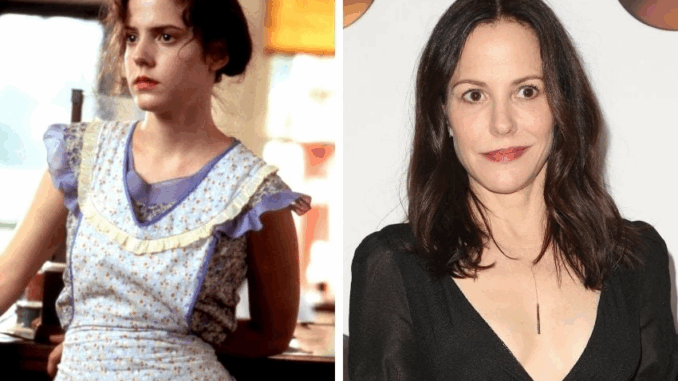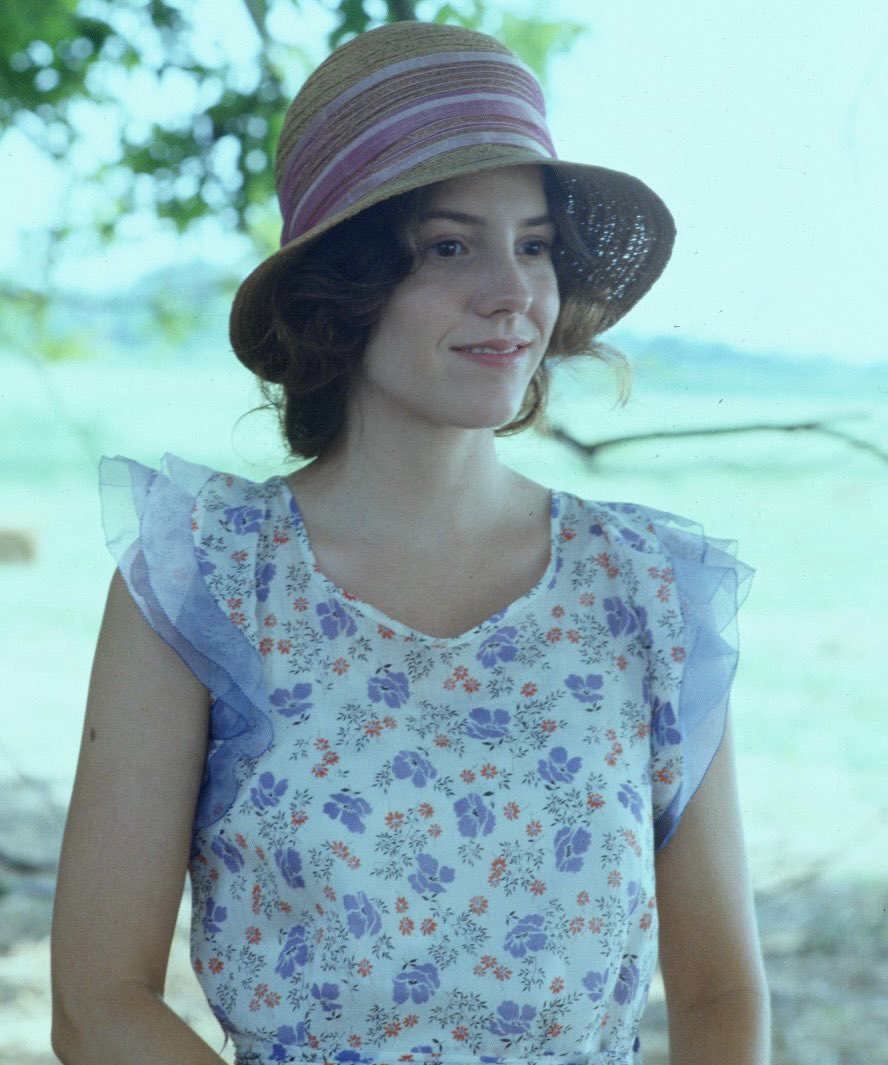
Ever wondered what it’s like to walk into a role that changes your life? Well, that’s exactly what happened with Mary‑Louise Parker when she stepped into the shoes of Ruth Jamison in the film Fried Green Tomatoes. This article dives deep into her journey—from the audition room to the emotional core of her performance—and lets us get to know the woman behind the character. Grab a cup of tea and settle in — because this is a conversation you’ll want to feel.
Who Is Mary-Louise Parker?
Mary-Louise Parker is an American actress whose career spans theatre, film, and television. She burst into wider public view in the early 1990s and has earned both critical praise and a devoted fan base. She’s got that rare combination of intelligence, vulnerability and quiet strength.
Whether it’s a stage play or a major motion picture, Parker brings something real and layered to each role. She doesn’t just play a part; she inhabits it.
Landing the Role of Ruth Jamison
When Parker auditioned for the role of Ruth Jamison in Fried Green Tomatoes, she wasn’t sure she’d land it. She read the part several times, worked through the script, and admitted she initially felt dissatisfied with her tests. Eventually, when paired with Mary Stuart Masterson (who portrayed Idgie Threadgoode), something clicked and the producers recognized the chemistry.
That chemistry matters. In Parker’s own words, it felt like “falling into step with someone you’ve known your whole life.”
Bringing Ruth to Life: Character Insights
Ruth Jamison isn’t your typical supporting character. She carries emotional weight, resilience, and complexity. Parker drew much of what she brought to Ruth from personal sources — she said that her mother was a strong influence in shaping Ruth’s spirit and heart.
What makes Ruth memorable is her transformation: from a somewhat sheltered woman in an abusive marriage to somebody brave enough to change her life. Parker embraced that arc. She gave Ruth dignity, even when the storyline demanded pain.

The Film’s Subtext and Historical Context
While the film wasn’t explicit about certain themes in the original novel, Parker has acknowledged that she tried to push for greater clarity around the relationship between Ruth and Idgie. In an interview she reflected that during filming the studio and director were not comfortable going further, but she and Mary Stuart Masterson felt the emotional truth of the characters.
This subtle subtext has since been recognized as part of why the film resonates deeply with many viewers. Parker’s performance helped anchor that delicate but powerful layer.
Challenges on Set: Embracing the Grit
Making a film that digs into deep issues isn’t easy, and Parker faced several challenges. For instance, she once shared an anecdote about getting a leech stuck to her leg during the swamp scene — one of those “you’ll never forget it” moments that remind you filmmaking isn’t always glamorous.
She also had to dig into uncomfortable emotions and live with the aftermath of that character’s journey, which takes stamina and commitment. Her theatre background helped her handle that intensity.
What the Role Meant for Her Career
This role came at a pivotal time in Parker’s career. It opened doors and showcased her ability to hold the screen. From that point, she took on roles that were daring and varied: theatre, independent films, major productions.
Being part of a film that became beloved helped cement her reputation. And she didn’t rest. She continued to explore, challenge herself, and grow.
The Actress’ Perspective: On Passion & Purpose
In interviews, Parker often emphasizes that she acts because she loves the craft. She once said she’s more of a “stage animal” at heart, even when she’s working on film or television. The theatre gives her a kind of rush that sets her alight.
That passion bleeds into how she approaches every character. She doesn’t just show up to work; she brings her full emotional self. That matters—especially when you’re playing someone with Ruth’s depth.
Lessons from Ruth to Real Life
What does Ruth’s story teach us? Quite a bit:
-
It’s okay to start again, even if your past holds you back.
-
Real friendship and love often look different than we expect.
-
Courage doesn’t always roar — sometimes it’s quietly choosing to live your truth.
And for anyone watching Parker’s performance: there’s a reminder that actors aren’t just entertainers—they’re mirrors to our deepest selves.
Reflecting on the Legacy of ‘Fried Green Tomatoes’
Fried Green Tomatoes remains a film people return to. Its themes of connection, resilience and transformation still resonate. The bond between Ruth and Idgie, the generational bridge between Ninny and Evelyn—it all rings true.
Parker’s role contributes to this legacy in no small measure. She gave Ruth a voice and a presence that still holds up.
How Mary-Louise Parker Prepares for Roles
If you’re curious how she dives in: Parker says research matters to her, but more than facts—she listens to what emotion lies beneath the lines. She moves beyond the text to the person underneath.
On set, she’ll ask: What does this character fear? What did she love? What broke her? And then she builds from there. That approach makes her work feel alive.
On Advocacy, Identity & Influence
Parker has also used her platform thoughtfully. She’s spoken candidly about identity and representation. Reflecting on Fried Green Tomatoes, she said she appreciated the lesbian fan base that found meaning in the film’s subtext, and she acknowledged how times are changing.
Her willingness to engage with those conversations adds an extra layer to her persona—she’s not just playing roles; she’s in dialogue with culture.
What’s Next for Mary-Louise Parker?
While Fried Green Tomatoes sits in the past, Parker keeps moving forward. From stage to screen and back again, she’s constantly evolving. She’s someone who refuses to be pigeonholed and continues to surprise.
If you admire her work in Ruth, you’ll want to keep an eye on whatever she does next — because there’s always more.
Why Her Story Matters to You
Maybe you’re an actor. Or maybe you just love good storytelling. But here’s the thing: Parker’s journey is a reminder that meaningful work comes when you lean into what scares you, not just what you know.
The story of Ruth — and of Parker’s own career choices — suggests that growth happens in the margins, when you step sideways rather than straight ahead. So if you’ve been holding back, maybe take the cue: show up. Be brave. Make the leap.
Conclusion
Interviewing Mary-Louise Parker — even in spirit through her quotes and work — teaches us that acting is more than performance: it’s life lived and examined. Her role in Fried Green Tomatoes gave us Ruth Jamison, a character who matters because she’s real. And Parker gave us more than a role — she gave us a sense of what courage looks like on screen and off.
When you watch her next, remember: behind the camera, there is an artist quietly telling the truth. That’s the magic.
FAQs
Q1: What role did Mary-Louise Parker play in “Fried Green Tomatoes”?
A1: She portrayed Ruth Jamison, a woman whose story becomes central to the film’s emotional impact.
Q2: How did Parker prepare for the role?
A2: She drew on personal experiences, especially influences from her mother, and worked to find emotional truth in Ruth’s journey from vulnerability to strength.
Q3: Did the film explicitly show a romantic relationship between Ruth and Idgie?
A3: While the original novel was more overt, the film opted for subtle subtext; Parker has discussed her effort to push for greater clarity around their connection.
Q4: How has Parker’s career evolved since “Fried Green Tomatoes”?
A4: She has taken on diverse roles in theatre, film and television, earned critical acclaim and remained committed to challenging and meaningful work.
Q5: What can we learn from Mary-Louise Parker’s craft and choices?
A5: We learn that vulnerability is a strength, that consistency matters more than spotlight, and that true artistry comes from living fully—even outside the frame.
